“What puts you over the top? It is the mind that actually creates the body, it is the mind that really makes you work out.. it is the mind that visualizes what the body ought to look like as the finished product.”
- Arnold Schwarzenegger

Click HERE to check out: The Weightlifting Gym buddy Journal:
A complete 12-week personal training book & program in a journal you use to track your progress.
_____________________________
Strength training is about using either physical weights or our body-weight to contract our muscles under tension to stimulate growth, strength, power, and endurance.
To get real results from strength training you need:
-
To understand the different parts of the body that need to be developed for an overall great physique
-
To push your limit constantly - keep the intensity level high, and always increasing
-
To have a plan/program that is well-rounded and tailored to your goals
-
To eat in a way that maximizes your progress
-
To fall in love with the process
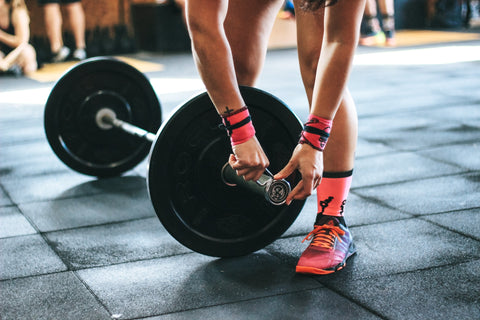
The factors that determine the quality of our body’s reaction weight training are:
Frequency: How often we train
Intensity: How hard we train
Time: How long we train
Type of exercise: What we do when we train
All of this boils down to one very simple principle:
Our bodies change when we regularly push its current limit.
The moment your level of intensity becomes ‘normal’ is the moment you stop changing.
If you’re currently working out one day per week, then increasing to 2 or 3 times a week will have a significant impact on your progress.
If you already work out 4-5 times a week, you have to find alternate ways to increase intensity and push the limit to continue changing at the rate you want.
Between the four factors above, you always have something that’s available to use that can increase the intensity with which you face your body’s progress.
If you can continuously reach the point where you’re really pushing the boundary of what your body is capable of, you’ll always be making strides towards your goals.
Targeting Each Part of Every Muscle
To get amazing all-around results, you have to know the different parts of the body that need to be developed to get the look you're aiming for.
The muscles we focus on in weight training are the Chest, Back, Shoulders, Biceps, Triceps, Trapezius, Quadriceps, Hamstrings, Glutes, Calves, and Abdominal muscles.
Chest
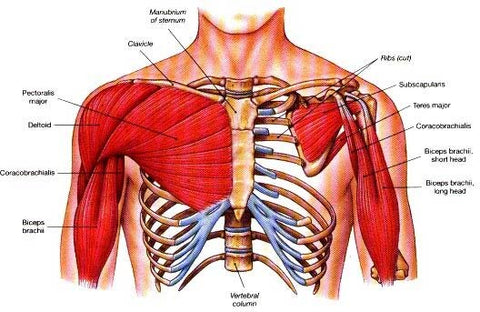
The chest (pectoral muscle) is one of the bigger muscles on the upper part of our body. As such, no one workout will adequately target the entire chest area.
Chest workouts will either mainly target the upper chest, middle part of the chest, or the lower chest. Focusing on all three major areas will allow the muscle to develop fully for maximum growth, thickness, and strength.
Back
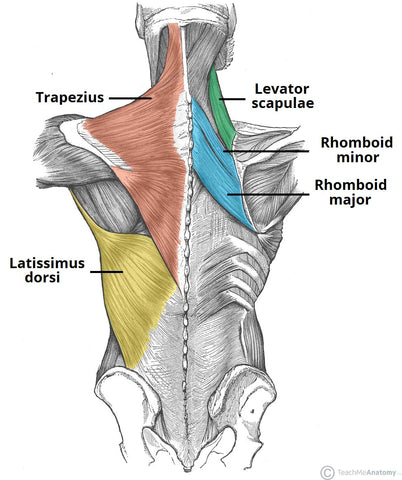
The back covers an enormous part of our upper body and like the chest, will require many different types of exercises to ensure that each part is being targeted adequately.
Back workouts are generally split into those that target the latissimus dorsi (‘lats’ or ‘wings’; the muscles behind your abdomen), and exercises that target the muscles closer to the top of our backs (the entire area in between our shoulder blades).
Shoulders
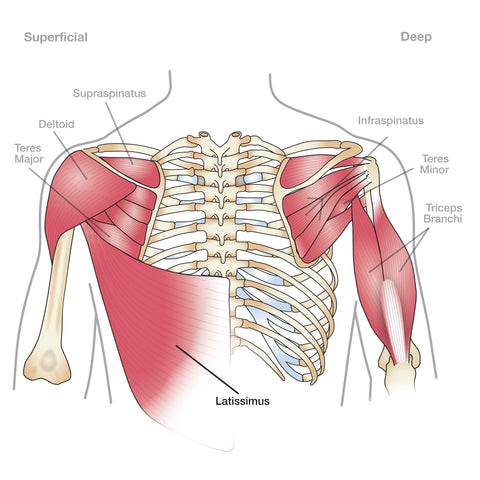
Shoulder development is crucially important in weightlifting. Partially because shoulder development improves the way the biceps, triceps, chest, and back look.
More importantly, the shoulders are at work when performing most upper-body exercises and thus need to be strong enough to perform those exercises without risking injury.
Shoulder workouts generally work the entire muscle. However, the muscle is split into three distinct parts - front, medial, and lateral, which all require unique workouts to develop the muscle in its totality.
Biceps
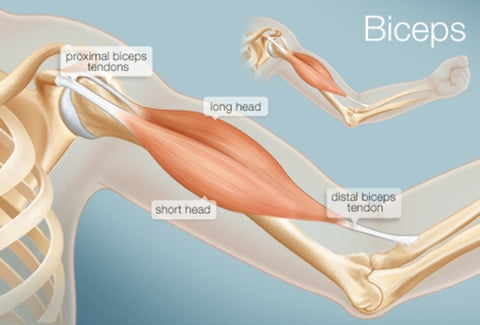
As one of the smaller muscles on our bodies, the biceps tire out more quickly than bigger muscles like the chest or back, and cannot grow as strong simply due to muscle size.
Bicep workouts should always focus on making sure to hit the long head and short head of the muscle (inner and outer parts).
Triceps
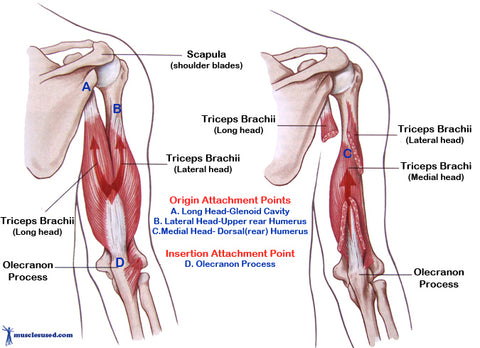
Tricep development is really important to arm strength and size because the tricep makes up more than 50% (around 2/3rds) of your arm. Triceps have 3 ‘heads’ (hence the name) - lateral, medial and long heads. Most workouts hit all 3, but each requires unique attention.
Abs, Obliques & Core
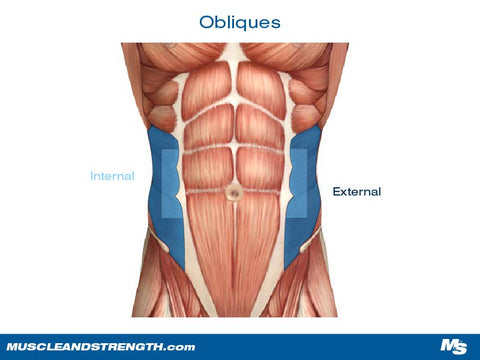
Your abdominal muscles consist of the rectus abdomens (six-pack), external obliques, and internal obliques. Abs are smaller muscles and require less training, but as smaller muscles, the recovery periods are also shorter - meaning you can train them more often.
The most important aspect in having visible abs is your body fat percentage, which is largely a result of the quality of your diet.
So train abs, but whether they show or not will be very dependent on how clean you eat.
Legs

Our leg muscles are split into three general parts - quadriceps, hamstrings (and glutes), and calves.
You should do bigger compound movements that work the entire leg, but also do exercises to focus on each part of the leg individually.
Leg training is critically important because it boosts testosterone, allowing further growth of the rest of the body. Don’t think when you’re doing legs you’re missing out on doing something that shows more.
Our lower bodies are a big part of how we look. They give the body the foundation it needs for healthy and active living and in fact allow the muscles on the upper body to grow.
Set & Rep Scheme
- Two muscles per workout
- 4 exercises per muscle
- 3-4 sets per exercise
- Pyramid each exercise
When starting out, aiming to complete 3 sets per exercise is a good goal. If you're an extreme beast, you can start out during 4 sets.
Whether you do 3 or 4 sets, incorporating a ‘drop-set’ on every last set of each workout is an amazing way to make sure the intensity is always high.
A “drop set” is where you complete one round of an exercise, and immediately lower the weight to do one more round to exhaust the muscle even more.
The reason we recommend 4 sets + a dropset is to ensure the portion of the muscle being worked is exhausted in each individual exercise.
The Pyramid Scheme
A pyramid set means you'd start each exercise with a lower weight and higher rep range and then progressively increase the weight while lowering the number of reps as you move from set to set.
So for example:
Set 1: Low weight, 10-15 reps.
Set 2: Increase weight, 8-10 reps.
Set 3: Increase weight again, 6-8 reps.
Dropset: Immediately after the third set, lower the weight and perform the movement to complete failure.
Why Use The Pyramid Scheme?
There are many benefits to using pyramid sets, the first of which is that there is essentially a built in warm up on the first set.
It warms up the muscle and gets it ready for the real heavier lifting.
The lower rep range sets also give you a taste of what you’re capable of. The amount of discomfort you face in your last few sets shows you how far you’ve come along. When you can complete your last few sets with relative comfort and ease, you know it’s time to move up in weight with all four sets!
It forces you to really test the limits of the muscle being worked. This leads to a greater understanding of your progress.
You can use any combination of muscles you like, but I recommend doing one 'push' and one 'pull' muscle in each workout.
Push Muscles: Shoulders, chest, triceps.
Pull Muscles: Back, Biceps.
*Legs should have their own day dedicated to them!
The “push” muscles are those which require a pushing action from the body to complete a movement. The most simple example is a push-up or using the bench press. The “pull” muscles are those that require a pulling motion - the back and biceps are examples of pull muscles.
The reason I recommend regularly combine one ‘push’ and one ‘pull’ muscle in each day’s workout is because you'll be getting more of the body involved on a regular basis.
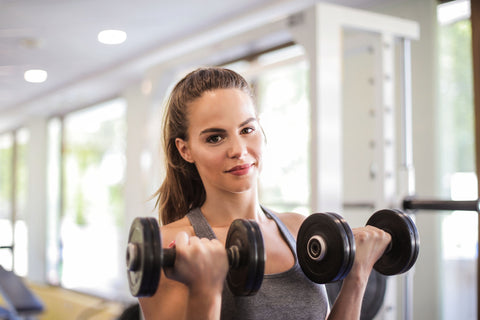
Very Important Things To Keep In Mind For Each Muscle
Back:
Think of your hands as hooks - it’s all pulling; they help you use the intended muscle.
Mainly working upper back or lats. If it’s a lat workout, feel the tension in the area and make sure it’s the lat that’s contracting because its easy to compensate with other muscles or the upper back.
When you pull, actively push your chest out and elbows back, allows more of an extension a little more easily.
Keep your back comfortably straight no matter which workout you’re doing. You see people pulling and swinging their backs all the time; that allows you to lift more weight at the expense of form and the best contraction of the muscle you're targeting. The contractions are what’s important - proper form leads to the best ones.
Triceps:
Wrists STRAIGHT as if a rod were going through your forearm and hand. Don’t let your wrist lag back or hold it too tightly forward.
Elbows tucked inwards to your body to contract as much of the tricep as possible and also hit the lateral head of the tricep.
Keep your elbow in the same spot as you complete each movement. When your elbow moves up and down with the movement, you’re compensating with the rest of your upper body and your tricep isn’t bearing the entire load.
Biceps:
Wrist straight through like a rod from your forearm through your wrist. No bending of the wrist to ensure that the bicep is the part of the body making the movement.
Back flat - neutral spine position, no arc forward or backwards
Elbows tucked into the body. They should remain still so that your bicep bears the burden of the movement and you’re not getting help from the momentum of the rest of the body.
Remember, the tension is desirable. The contraction is what we want - not just swinging around.
If you feel you need to life your arm upward to finish the movement, your supporting muscles in your forearm are likely too weak - focus on your mind-muscle connection with them.
Chest:
Chest out, traps back, shoulders down.
Shoulders:
There is a lot of natural swinging that happens when we work shoulders, and you have to stay mindful of that and not use momentum for the movement. The whole point is the contraction so using the momentum of the swing doesn’t do much. Doing 6 good reps is better than 15-20 swinging reps!
Relax the shoulders and traps, let them fall down and back… and keep them there!
Legs:
Number one rule - DO NOT SKIP!
When you train, there is an increase in testosterone. The more intense your workout is, the more testosterone that’s produced. Leg training includes many exercises that work the entire lower portion of the body. As big movements that work many muscles at once, the intensity is very high, producing more testosterone, which benefits all of your growth - upper AND lower body.
Resting Periods
How much rest you take in between sets is important to pay attention to.
You need to give your muscles enough time to be ready for the next set while making sure you’re not wasting time and are working with maximum intensity.
You’ll need to find the proper balance for yourself. Your resting periods will decrease the more experienced you become.
In general, 45 seconds - 90 seconds in between sets is a good bench mark.
Anything under may be too short, and anything over is probably too long.
What’s important is that you learn to recognize when you’re wasting time out of laziness and to limit that as much as possible!
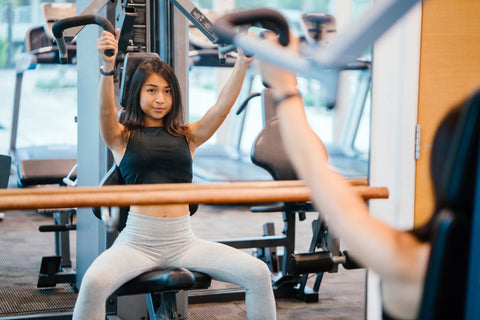
Adequate Recovery
Hurting is GOOD (soreness, not physical pain that tells you something has gone awry with your body)!
You WILL feel sore.
You WANT to feel sore - that’s how you know you’re doing work.
As you progress through this journal, you will notice your stamina and workout capacity increasing.
But that being said, recovery is a necessity. Pushing yourself to the limit is also necessary.
How do I find the balance?
Recovery involves more than just letting your muscles rest - it involves letting your joints, connective tissues, and bones rest as well. There is lots more involved in any weight training exercise than just the muscle itself.
Think of it as the same reason we need to sleep every single day. Letting the body rest is enormously important.
The beautiful thing is that your body will tell you when it needs to rest!
Physical exhaustion as opposed to mental fatigue becomes very obvious when the body is has surpassed a certain point that you’ll recognize.
Of course, that means you have to really feel the exhaustion rather than use recovery as an excuse to not push yourself or even get to the gym.
A big part of what you gain by weight training regularly is becoming sincere with yourself about when you’re making excuses vs. when you really need a rest.
Falling In LOVE With The Process
There is no absolute correct way to work out.
The true secret to strength, muscle growth, and fitness is: you start SOMEWHERE with SOME routine, you stick to it for some time, learn from the experience and move forward from there.
We are giving you a routine that WILL 100% help change your body if you stick to it. But the learning never stops.
We hope this gives you the proper baseline to continue advancing in your weightlifting goals and strategies so you KEEP getting closer to that dream body.
This whole process is going to be a blast - seriously.
Whether you’re experienced in weight training or just starting out, I promise, we will help push your boundary constantly. That’s what we really fall in love with.
You’ll learn about your own psychology…refine your body…grow in strength, size, endurance, and most importantly, you’ll feel REALLY good.
You’ll find that you regularly just have more energy. You’ll consistently get a high from your workouts and you will begin to fall in love with the body in a special way.
The body is our home, the vehicle through which we travel this journey of life.
It is infinitely complicated, wonderfully responsive, sensitive, and a primary instrument for inner psychological growth.
Keeping your body in order, inside and out, feels good for a reason.
That good feeling is how you know its importance - almost like how feeling hungry is your signal to eat.
So, to sum it all up:
Get in the gym regularly, have a plan that you stick to for a long period of time so you can get a good taste for how you like it, workout with intensity, make sure to give attention to each muscle, and never stop learning about how to improve!
Everything you read right now is really important to getting started with the right foundation of information and planning.
But in the end of the day, your progress is up to you.
Your desire to meet your goals is up to you and is a decision you make (or fail to make) every single day.
If you have questions about weight training you'd like more information on, you can email me at ari@habitnest.com and I'd be happy to provide guidance.
Good luck!
